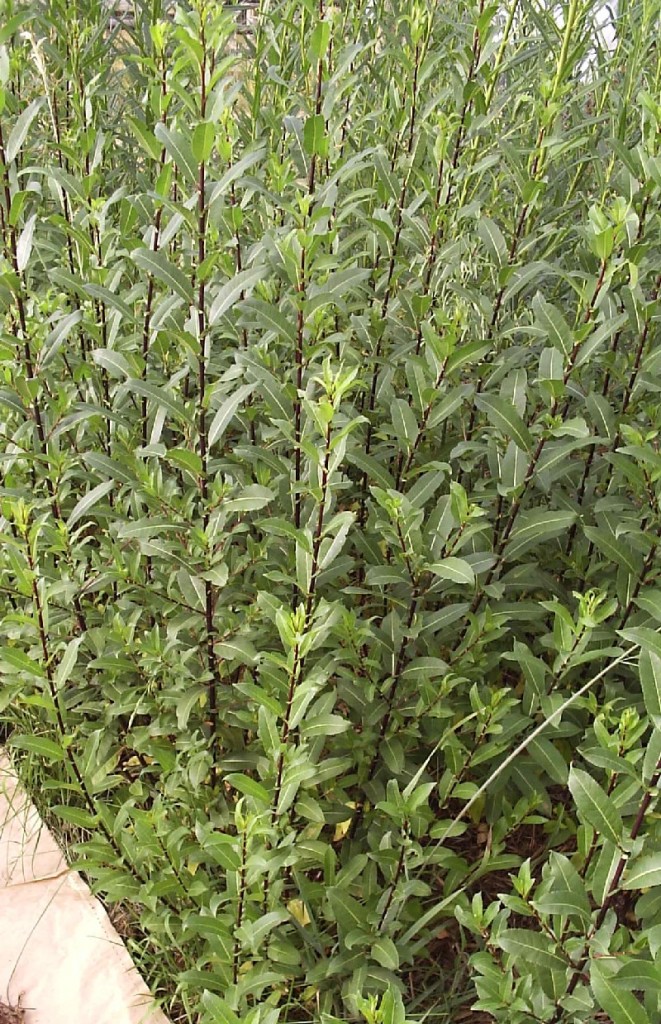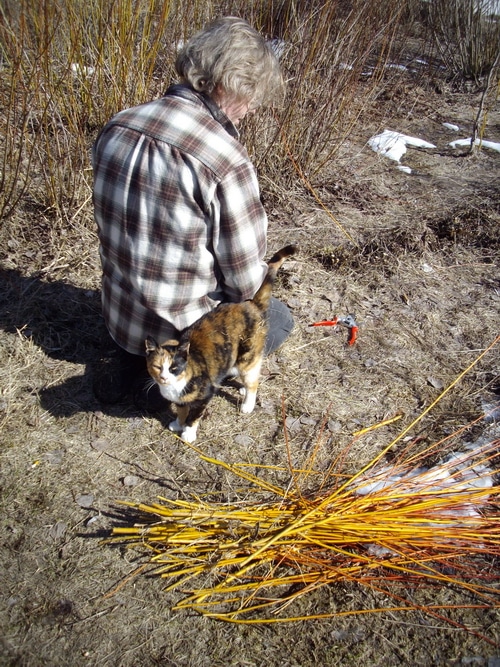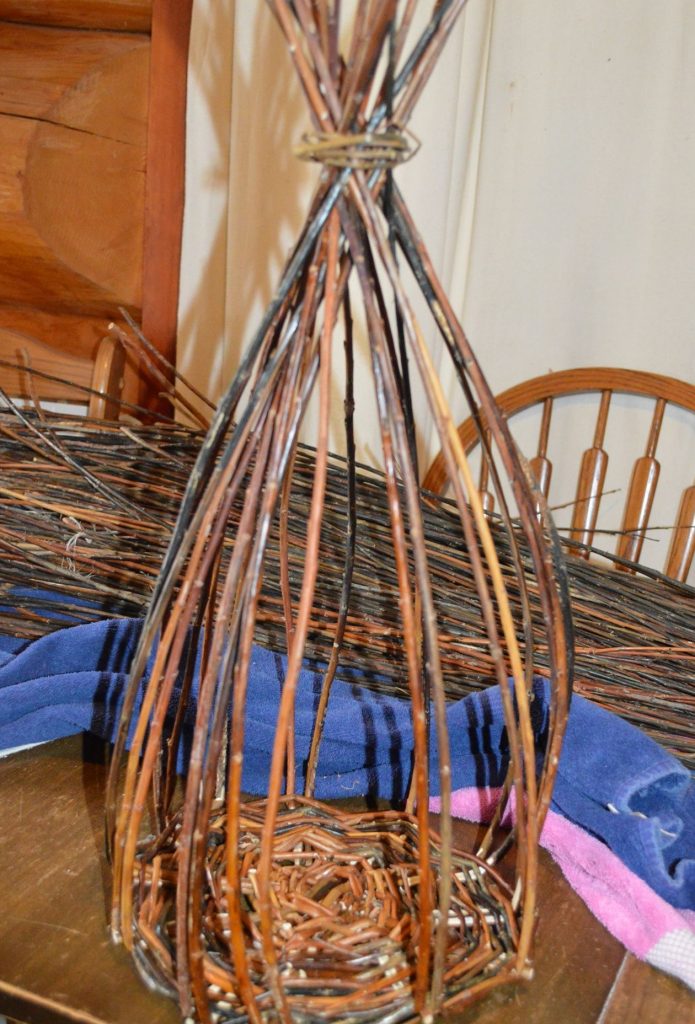Basket willows
Thank you for your interest in purchasing willows. Joybilee Farm no longer has willows for sale. I’m leaving this page up though, for information, for those interested in learning more about how to grow willow for basket weaving.
Salix purpurea varieties
The purpureas are bitter and unpalatable to livestock, deer and resist mouse and vole damage in the garden. A good choice if your willows will not be protected by fencing in livestock and wildlife areas. “Green Dicks” has fine basket weavers that grow to about 3 or 4 ft in length. “Eugenii” has fine rods that grow to 6 ft. and “187” grows to 4 feet and is useful for stream restoration, as well as basket weaving.

Coppiced Black Maul Basket Willows at Joybilee Farm
Specialty Basket Willow varieties
This includes 3 varieties of the most common basket weaving willows — Salix triandra, S. viminalis, S. purpurea varieties. This is a great package for those just starting out on the adventure of willow growing and weaving. The three varieties offer color contrast and variety of length and vigor for basket weaving, living willow sculpture and furniture making.

Coppiced willow in September
Willow with contrasting color —
3 varieties of willow are beautiful for obtaining color contrast in your baskets
Includes: ‘Vitellina’, ‘Rubykins’, and ‘Black Maul’. Hardy to zone 3.
This package includes some of our most colorful basket weaving willows: S. Alba Vitellini has egg yolk yellow stems that turn orange when exposed to cold, S. korianagi “Rubykins” has fine, burgundy stems in Spring and S. triandra,”Black Maul” has dark brown stems. All perform well when coppiced annually in Spring. When willow has dried and matured in a woven basket, all stem colors eventually turn brown.
How to plant willow:
To plant willows prepare the ground by tilling and weeding well. Ground may be covered with a landscape fabric to reduce weeding during the growing season. Willow cuttings are pushed into the ground and the earth is firmed in around them. Keep well watered and weeded during the first two growing seasons to allow the roots to become well established.

How to harvest willow for basket weaving and herbal remedies
Willows may be coppiced early in the spring before the buds open. They should be cut as individual stems at the stool. Do not cut into the stool or you will kill the plant.
Weaving Willow Baskets:
Once harvested, willows should be allowed to dry, away from weather in a sheltered spot. When you are ready to weave with them, soak them in a tank of warm water, a repurposed bath tub works for stems that are 4 ft. long or shorter. Then follow the willow basket weaving instructions in your weaving book.
Only soak the amount of willow you will use in your basketry in a few days. Soaked willow does not keep. Dried willow will last indefinitely, though.
We are no longer able to sell willow to the public. With the current state of affairs in Canada and the USA many willow suppliers have shut down. This may change once the world gets back to normal. I will keep this page updated.


